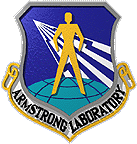 |
Radiofrequency Radiation
Dosimetry Handbook
(Fourth Edition)
|
Contents

- INTRODUCTION
- HOW TO USE DOSIMETRIC DATA IN THIS HANDBOOK
- SOME BASICS OF ELECTROMAGNETICS
3.1. Terms and Units
- 3.1.1. Glossary
- 3.1.2. Measurement Units
- 3.1.3. Vectors and Fields
3.2. Field Characteristics
- 3.2.1. Electric Fields
- 3.2.2. Magnetic Fields
- 3.2.3. Static Field
- 3.2.4 Quasi-Static Fields
- 3.2.5. Electric Potential
- 3.2.6. Interaction of Fields with Materials
- 3.2.7. Maxwell's Equations
- 3.2.8. Wave Solutions to Maxwell's Equations
- 3.2.9. Solutions to Maxwell's Equations Related to
Wavelength
- 3.2.10. Near Fields
- 3.2.11. Far Fields
- 3.2.12. Guided Waves
- 3.3.1. Poynting's Theorem (Energy Conservation Theorem)
- 3.3.2. Interaction of fields with Objects
- 3.3.3. Electrical Properties of Biological Tissue
- 3.3.4. Planewave Absorption Versus Frequency
- 3.3.5. Polarization
- 3.3.6. Specific Absorption Rate
- 3.4.1. Electric-Field Measurements
- 3.4.2. Magnetic-Field Measurements
- 3.4.3. SAR Measurements
- DIELECTRIC PROPERTIES
- 4.1.1. Electrical Properties
- 4.1.2. Membrane Interactions
- 4.1.3. Field-Generated Force Effects
- 4.1.4. Possibility of Weak Nonthermal Interactions
4.2. Measurement Techniques
- 4.2.1. Introduction
- 4.2.2. Low-Frequency Techniques
- 4.2.3. High-Frequency Techniques
- 4.2.4. Time-Domain Measurements
- 4.2.5. Measurement of In Vivo Dielectric Properties
- 4.2.6. Summary
- THEORETICAL DOSIMETRY
5.1 Methods of Calculation
- 5.1.1. Planewave Dosimetry
- 5.1.2. Near-Field Dosimetry
- 5.1.3. Sensitivity of SAR Calculations to Permitivity
Changes
- 5.1.4. Relative Absorption Cross Section
- 5.1.5. Qualitative Dosimetry
- CALCULATED DOSIMETRIC DATA
- 6.2.1 Short-Dipole and Small-Loop Irradiators
- 6.2.2. Aperture Fields
- EXPERIMENTAL DOSIMETRY
7.2. Measurement Techniques
- 7.2.1. Dosimetry Requirements
- 7.2.2. Holding Devices
- 7.2.3. Exposure Devices for Experimental Subjects
- 7.2.4. Incident-Field Measurements
- 7.2.5. Measurement of Specific Absorption Rates
- 7.2.6. Scaled-Model Techniques
- EXPERIMENTAL DOSIMETRIC DATA
- DOSIMETRY IN THE VERY-LOW-FREQUENCY AND MEDIUM-FREQUENCY RANGES
- 9.1.1. Calculation of Current
- 9.1.2. Measurement of Body Potential and Dimensions
- 9.1.3. Calculation of Body Resistance and SAR
- THERMAL RESPONSES OF MAN AND ANIMALS
- 10.5.1. Human Data
- 10.5.2. Animal Data
- 10.6.1. Vasomotor Control
- 10.6.2. Sweating
- 10.7.1. Models of the Thermoregulatory System
- 10.7.2. Data for Heat-Response Calculations
- 10.7.3. Calculations
- Radiofrequency Radiation Safety Standards
11.2. RFR Safety Standards
- 11.2.1. American National Standards Institute (ANSI)
Standards
- 11.2.2. American Conference of Govermental Industrial
Hygienists (ACGIH) TLV
- 11.2.3. United States Federal Guidelines
- 11.2.4. International Radiation Protection Association
Guidelines
11.3 Physical Considerations Inherents in Application of New RFR Safety Guidelines
- 11.3.1. RFR Penetration and Absorption in Biological
Systems
- 11.3.2. Partial Versus Whole-Body Exposures
- 11.3.3. Subject and Source Dynamics

Go to Chapter 1.
Last modified: June 14, 1997
© October 1986, USAF School of Aerospace Medicine, Aerospace Medical Division (AFSC), Brooks Air Force Base, TX 78235-5301
This is a Department of Defense computer system for authorized use only.
DoD computer systems may be monitored for all lawful purposes, including
to ensure that their use is authorized, for management of the system, to
facilitate against unauthorized access, and to verify security procedures,
survivability, and operational security. Using this system constitutes
consent to monitoring. All information, including personal information,
placed on or sent over this system may be obtained during monitoring.
Unauthorized use could result in criminal prosecution.
POC: AFRL/HEDM, (210)536-6816, DSN 240-6816

